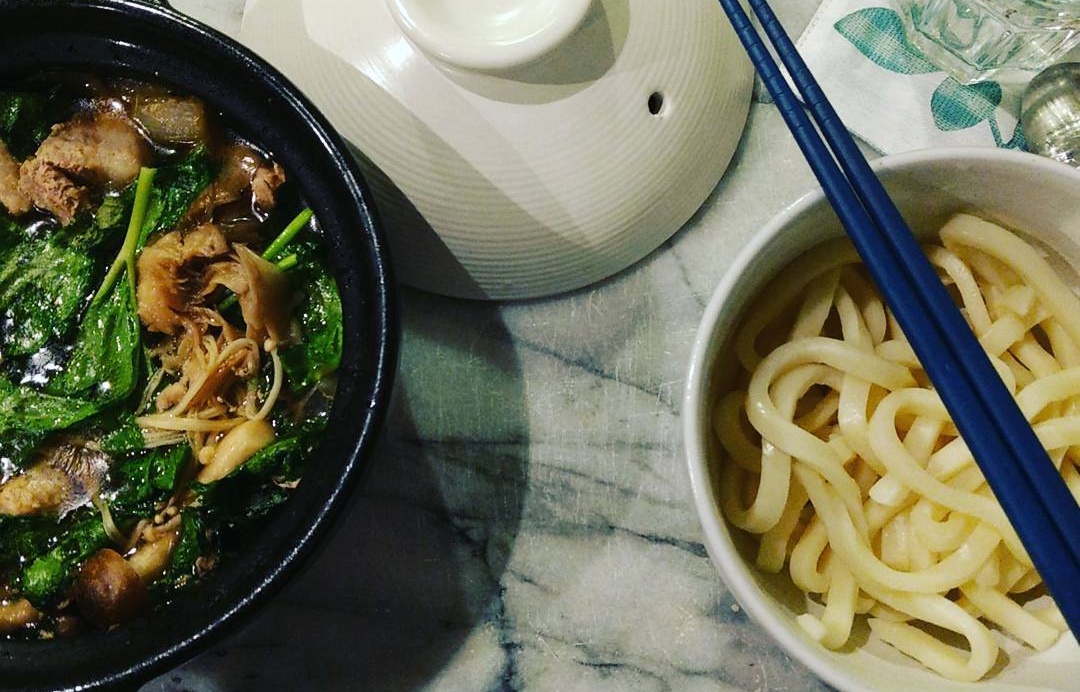Hot Food in Snowy Spots Across Japan

Tsukemen (All Around Japan)
Yes, you know ramen. But did you know that it could be even more savory? Try tsukemen, a cousin of ramen, but with a thicker broth and noodles and toppings served separately. There is even an option to request for collagen balls for this one, and also additional cheese topping. The best part about tsukemen is the dipping action, where instead of directly slurping everything (as you do with ramen), you have to dip the noodles before putting them into your mouth. The famous shops that see long queues are Rokurinsha, Mutekiya and Mitsuyado Seimen.
Wagyu Soup (Tottori)
You may not have heard of Tottori, but it's actually a hidden gem of Japan. It's worth the visit for its wineries, local delicacies and breathtaking sand dunes covered with patches of snow in winter. If you think all wagyu in Japan is the same, Tottori's beef may prove you wrong. Tottori happens to be the cradle of Japanese black wagyu, as its beef scores the highest wagyu rating in all of Japan. For those with deep pockets, there's a special bento box full of it costing ¥292,929 (US$2,615). The marbly beef, with the right amount of fat, makes it tender, tasty and really juicy in every bite.
Amazake (Aichi)

http://www.ozushop.jp/en/images/menu/menu05_photo.jpg
In the olden days, making amazake was an alternative opportunity for unemployed samurai to earn money. This sweet low- or non-alcoholic sake, made of fermented brown rice, may now be a famous wintertime drink, but it actually has a century-old history. Legend has it, amazake was an integral part of summers way back because of its energy-giving properties that help combat exhaustion from heat. It has also been part of Hina Matsuri (Doll Festival) ceremonies, as the non-alcoholic version could be given to children. The taste may not be attractive to everyone, but it may be good to know that it's a healthy drink that is rich in amino acids and vitamin B. It's believed to aid in constipation and is also given as an alternative drink to weaning babies. Oh, and it also earns a thumbs up from vegetarians and gluten-free eaters!
While amazake is available most anywhere in Japan, Aichi Prefecture's Kojiya specializes in producing it. Nagoya's Kuze Fuku also produces amazake; in fact, they have 10 varieties of it. Of course, you also could go to Aichi to experience a winter wonderland.
Steamed Crab Legs (Kanazawa)
If it's seafood you crave on a cold winter day, then you should be in Kanazawa. Kanazawa is a good base for travelers bound for Shirakawa-go and Gokayama, known for UNESCO World Heritage Sites that are just so pretty with snow. But you can also go to Kanazawa for gold items and cosmetics and good food. Kanazawa possibly sells some of Japan's most expensive crabs. These crustaceans are good steamed or in soupy delicacies; perfect for cold weather.
Mutton (Hokkaido)

Hokkaido is famous for its ski resorts and snow spots and you will definitely never run out of things to do in this prefecture. Jingisukan (the Japanese way of pronouncing Gengis Khan) is a type of grilled mutton that's famous in this notoriously cold prefecture. In the 1900s, there was a strong demand for wool production used for naval uniforms and military blankets, which left a lot of meat available. In 1936, a members-only club founded the "marinade meat before grilling" cooking style. Although it took some time before the locals adapted eating mutton, it has now become a staple food in Hokkaido. Oh, and old wives say that no other meat warms your body better than lamb. So, lamb up!



